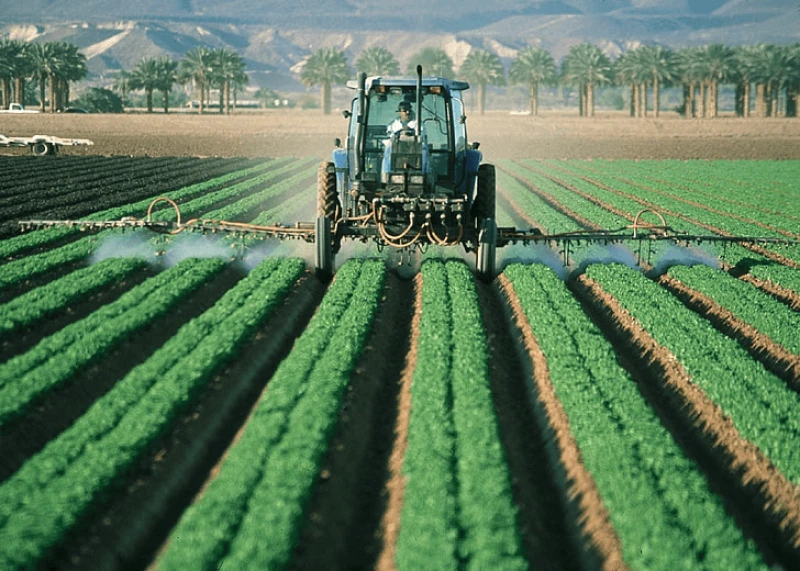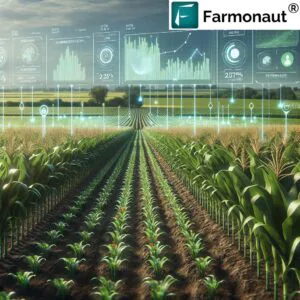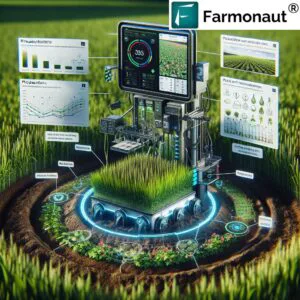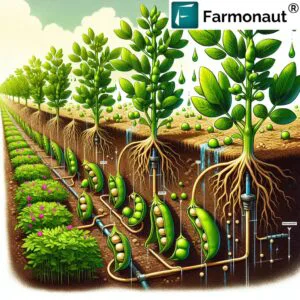Farm chemicals and technology: Challenges, risks and opportunities
Farm chemicals and technology: Challenges, risks and opportunities


Agricultural chemicals, including insecticides, pesticides, herbicides, and plant growth regulators, are indispensable tools in modern farming. They play a crucial role in protecting crops from devastating pests and diseases, enhancing growth, and ultimately securing the global food supply. However, these powerful substances are a double-edged sword. When used improperly, they can lead to significant crop losses, severe financial setbacks for farmers, and pose considerable risks to human health and the environment. This issue isn’t confined to one region; it’s a global challenge impacting agricultural communities worldwide. Annually, a substantial portion of potential crop yield is lost not to the pests or diseases themselves, but as a direct consequence of farmers lacking access to, or not following, scientifically sound advice regarding the application of these chemicals.
The problem often originates from a gap in knowledge and access to reliable information. Farmers, especially in less developed regions or those operating small to medium-sized holdings, may attempt to use these complex chemicals based on limited personal experience or, more frequently, by relying on recommendations from local agricultural input suppliers. While many suppliers are knowledgeable and responsible, a significant number may lack formal scientific training or accredited degrees in agronomy. Their advice can sometimes be anecdotal, based on what might have appeared to work for others in potentially different scenarios or with different crops. This approach to chemical recommendation is inherently risky and can lead to farmers applying inappropriate, ineffective, or even harmful treatments.
Compounding this, commercial interests can sometimes overshadow best practices. Retailers may promote products from companies with whom they have affiliations, regardless of whether those products are the most suitable or even necessary for a farmer’s specific situation. This can lead to the application of irrelevant solutions, contributing to crop damage, wasted resources, and diminished profits for the farmer.
Perhaps the most alarming scenario is the unintentional use of chemicals that have been restricted or banned by national or international regulatory bodies due to safety or environmental concerns. Farmers are often in a vulnerable position, lacking straightforward means to verify the legitimacy, approval status, or appropriate usage guidelines for every chemical suggested, especially if information is not readily available in their local language or an easily understandable format. This absence of verifiable, accessible information leaves them susceptible to using substances that could endanger their crops, their own health, the well-being of their communities, and the broader ecosystem.
The consequences of such misapplication are far-reaching, underscoring the critical need for accessible, scientifically-backed advisory services that empower farmers to use agricultural chemicals safely and effectively.
A Case in Point: Learning from a Farmer’s Experience
The challenges of improper chemical use are not abstract; they manifest in real-world scenarios affecting farmers globally. Consider the experience of a citrus farmer, let’s call him Alex, who cultivates lemons on his commercial orchard. Alex, an engaged member of his local farming community and active on online agricultural forums, always strives to implement the best practices he learns.
On one occasion, Alex faced a distressing issue: the new leaves on his lemon trees were exhibiting an unusual, distorted “cut shape,” a clear deviation from their normal, healthy development. More alarmingly, the affected trees had completely stopped producing flowers for several days. This sudden and concerning change, he noted, occurred shortly after he applied a broad-spectrum pesticide product, recommended by a local agricultural supply shop, to manage a suspected insect infestation.

Seeking advice, Alex shared his predicament on an online farming forum. Another experienced grower on the forum quickly pointed out that the active ingredients in the pesticide Alex had used were known to cause phytotoxicity in citrus crops during certain growth stages, especially if applied at incorrect concentrations or during high temperatures. Furthermore, it was highlighted that this particular formulation, or one very similar, had been flagged by agricultural authorities in some regions for its potential to disrupt the flowering cycle in sensitive fruit trees if not used with extreme caution and precise timing.
Alex was taken aback. The chemical had been explicitly suggested by his trusted local shop, a place he relied on for inputs and advice. The incident revealed a critical lapse: the local vendor, perhaps unintentionally, had provided a recommendation that was unsuitable for Alex’s specific crop and its current developmental stage. This scenario is not unique to Alex or citrus farming; it’s a recurring theme across different agricultural systems worldwide where farmers might receive and act upon incomplete or inappropriate advice. It underscores the vulnerability of farmers who depend on local, sometimes unverified, sources of information for critical decisions like pesticide application.
This real-world example illustrates the urgent need for farmers everywhere to have access to verified, up-to-date, and crop-specific information regarding agricultural inputs, independent of potentially misinformed or commercially-driven local vendors. Without this, the cycle of improper chemical use, crop damage, and economic loss is likely to continue.

The Broader Impact of Improper Chemical Use
The misuse of agricultural chemicals extends far beyond individual farm losses, creating a ripple effect that impacts economies, ecosystems, and human health on a global scale.
- Economic Toll: On an individual level, crop damage from incorrect chemical application means reduced yields and lower quality produce, directly hitting a farmer’s income. Cumulatively, these losses can be substantial. If a significant number of farmers in a region experience such issues, it can affect local food availability and prices. On a larger scale, for nations heavily reliant on agricultural exports, widespread chemical misuse leading to produce that doesn’t meet international safety standards (e.g., maximum residue limits for pesticides) can result in rejected shipments, loss of market access, and damage to the country’s agricultural reputation. The cost of rectifying contaminated soil or water sources also adds to the economic burden.
- Environmental Degradation: The environment is a silent victim of improper chemical use. Over-application or application of the wrong chemicals can lead to:
- Soil Contamination: Persistent chemicals can accumulate in the soil, harming beneficial soil microorganisms crucial for soil health and fertility. This can lead to long-term degradation of agricultural land.
- Water Pollution: Chemicals can leach into groundwater or be carried by rainwater runoff into rivers, lakes, and oceans. This contaminates drinking water sources, harms aquatic life, and can lead to eutrophication (algal blooms) in water bodies.
- Harm to Non-Target Organisms: Broad-spectrum pesticides, when misused, don’t just kill target pests. They can decimate populations of beneficial insects, including vital pollinators like bees and butterflies, which are essential for the reproduction of many crops and wild plants. Birds, fish, and other wildlife can also be poisoned directly or indirectly through the food chain.
- Pesticide Resistance: The repeated and incorrect use of certain pesticides can lead to the development of resistance in pest populations. This means that over time, these chemicals become less effective, forcing farmers to use higher doses or more toxic alternatives, exacerbating the problem.
- Soil Contamination: Persistent chemicals can accumulate in the soil, harming beneficial soil microorganisms crucial for soil health and fertility. This can lead to long-term degradation of agricultural land.
- Human Health Concerns: The health risks associated with improper chemical use are significant and varied:
- Farmworker Exposure: Agricultural workers who mix, load, and apply chemicals are at the highest risk of acute poisoning if they don’t use proper protective equipment or if chemicals are handled carelessly. Symptoms can range from skin and eye irritation to severe respiratory problems, neurological damage, and even death in extreme cases.
- Pesticide Residues in Food: If chemicals are applied too close to harvest, or if incorrect chemicals are used, residues can remain on or in the food consumed by the public. While regulatory bodies set maximum residue limits (MRLs), misuse can lead to these limits being exceeded, posing potential long-term health risks to consumers, including an increased risk of certain cancers, reproductive problems, and developmental issues, especially in children.
- Contaminated Drinking Water: As mentioned, chemicals leaching into water sources can contaminate drinking water, leading to widespread exposure for communities, with potential chronic health effects.
- Drift and Off-Target Exposure: Spray drift during application can expose nearby communities, schools, and homes to harmful chemicals, leading to respiratory issues and other health problems.
- Farmworker Exposure: Agricultural workers who mix, load, and apply chemicals are at the highest risk of acute poisoning if they don’t use proper protective equipment or if chemicals are handled carelessly. Symptoms can range from skin and eye irritation to severe respiratory problems, neurological damage, and even death in extreme cases.

Navigating Towards Safer and More Effective Chemical Use
Addressing the challenges of chemical misuse requires a multi-pronged approach focused on empowering farmers with knowledge, promoting safer alternatives, and leveraging technology.
- Accurate Information and Diagnostics: The foundation of safe chemical use is correct identification of the problem. Is it a pest, a disease, or a nutrient deficiency? Misdiagnosis often leads to the wrong chemical being applied. Access to reliable diagnostic tools and expert advice is crucial.
- Integrated Pest Management (IPM): IPM is an ecosystem-based strategy that focuses on long-term prevention of pests or their damage through a combination of techniques such as biological control, habitat manipulation, modification of cultural practices, and use of resistant varieties. Pesticides are used only after monitoring indicates they are needed according to established guidelines, and treatments are made with the goal of removing only the target organism. IPM programs aim to select and apply pesticides in a way that minimizes risks to human health, beneficial and non-target organisms, and the environment.
- Understanding Chemical Labels and Regulations: Chemical labels are legal documents providing critical information on active ingredients, target pests/crops, application rates, safety precautions, re-entry intervals, and pre-harvest intervals. Farmers need to be trained to read, understand, and strictly adhere to these labels. Awareness of local and international regulations regarding banned or restricted chemicals is also vital.
- Proper Training and Protective Equipment: Handling and applying agricultural chemicals requires specific knowledge and skills. Training programs on safe application techniques, calibration of equipment, and the correct use of Personal Protective Equipment (PPE) – such as gloves, masks, goggles, and coveralls – are essential to minimize exposure risks for farmworkers.
- The Role of Technology: Modern technology offers powerful tools to enhance the precision and safety of chemical use. This is where innovative solutions like those provided by Farmonaut come into play.
The Farmonaut Solution: Personalized Farm Advisory through Satellite and AI Technology
The agricultural sector is increasingly benefiting from technological advancements, and Farmonaut is at the forefront of this revolution, offering sophisticated Satellite and AI-based personalized farm advisory services. This approach directly tackles the information gap and uncertainties that often lead to the improper use of agricultural chemicals, guiding farmers towards more precise, efficient, and sustainable practices.
- Satellite-Powered Insights: Your Farm’s Health from Above
Farmonaut leverages the power of high-resolution satellite imagery to provide a bird’s-eye view of agricultural landscapes. These “eyes in the sky” regularly capture data across various light spectrums, far beyond what the human eye can perceive. This data is then processed to generate valuable insights:- Crop Health Monitoring: Specialized vegetation indices (like the Normalized Difference Vegetation Index or NDVI, which acts as a plant health indicator) are calculated from satellite data. These indices reveal the density and vigor of vegetation, allowing for the early detection of stress in crops often before symptoms are visually apparent on the ground. This could be due to water scarcity, nutrient deficiencies, or the initial stages of a pest or disease attack.
- Water Stress Identification: Satellites can help assess soil moisture conditions and identify areas within a field that are experiencing water stress or, conversely, are waterlogged. This enables farmers to optimize irrigation, applying water only when and where it’s needed.
- Large-Scale and Remote Monitoring: For large farms or for agribusinesses managing multiple land parcels, satellite technology offers an efficient way to monitor vast areas without the need for extensive manual scouting. This is particularly beneficial for identifying localized problem spots that might otherwise go unnoticed.
- Data-Driven History: Regular satellite data collection builds a historical record of farm performance, helping to identify trends, compare season-over-season changes, and assess the effectiveness of different management practices.
- Process and Analyze: AI algorithms sift through complex satellite imagery and other relevant datasets, including weather forecasts, historical weather patterns, soil type information, crop-specific models (detailing growth stages, nutrient needs, and pest/disease vulnerabilities), and even farmer-inputted data.
- Identify Anomalies and Patterns: The AI is trained to recognize deviations from normal crop development patterns. It can flag areas showing uncharacteristic stress, unusual growth rates, or conditions conducive to pest and disease outbreaks.
- Predictive Analytics: By analyzing current conditions and historical trends, AI can help predict potential issues. For instance, it might forecast a high probability of a specific fungal disease emerging based on prevailing weather conditions and crop stage, allowing for preemptive action.
- Generate Insights: The AI doesn’t just present raw data; it translates it into understandable and actionable insights. This could be a map highlighting areas of a field needing immediate attention or a notification about a developing risk.
- Crop Health Monitoring: Specialized vegetation indices (like the Normalized Difference Vegetation Index or NDVI, which acts as a plant health indicator) are calculated from satellite data. These indices reveal the density and vigor of vegetation, allowing for the early detection of stress in crops often before symptoms are visually apparent on the ground. This could be due to water scarcity, nutrient deficiencies, or the initial stages of a pest or disease attack.
- The Power of Artificial Intelligence (AI): Turning Data into Actionable Decisions
The sheer volume of data generated by satellites is immense. This is where Artificial Intelligence and Machine Learning algorithms become critical. Farmonaut’s AI systems are designed to: - Personalized Farm Advisory: Precision for Your Unique Farm
The true innovation in Farmonaut’s offering lies in its commitment to personalized advisory. Generic advice often falls short because every farm, and even different zones within a single farm, has unique characteristics. Farmonaut’s system delivers:- Tailored Recommendations: Instead of broad-stroke suggestions, farmers receive advice customized to their specific field location, soil type, chosen crop variety, current growth stage, and local micro-climatic conditions.
- Actionable Guidance for Chemical Application (and Reduction):
- Targeted Pest/Disease Management: If satellite data and AI analysis indicate a pest or disease hotspot, the advisory can pinpoint the affected area, allowing for spot-treatment rather than blanket spraying of chemicals. This significantly reduces overall chemical usage, cost, and environmental impact. The system can also suggest the most appropriate type of chemical based on the identified issue and crop, cross-referencing with approved and safe options.
- Precision Nutrient Management: By identifying zones with specific nutrient deficiencies, farmers can apply fertilizers variably, only where and in the quantities needed, preventing over-fertilization and nutrient runoff.
- Targeted Pest/Disease Management: If satellite data and AI analysis indicate a pest or disease hotspot, the advisory can pinpoint the affected area, allowing for spot-treatment rather than blanket spraying of chemicals. This significantly reduces overall chemical usage, cost, and environmental impact. The system can also suggest the most appropriate type of chemical based on the identified issue and crop, cross-referencing with approved and safe options.
- Optimized Irrigation Schedules: Based on real-time moisture assessments and crop water requirements, the system provides precise irrigation advice, conserving water and preventing water stress or waterlogging, both of which can make crops more susceptible to problems requiring chemical intervention.
- Informed Decision-Making: Farmers are empowered with clear, data-backed information, enabling them to make timely and effective decisions, moving away from guesswork or unreliable advice.
- Tailored Recommendations: Instead of broad-stroke suggestions, farmers receive advice customized to their specific field location, soil type, chosen crop variety, current growth stage, and local micro-climatic conditions.
- Accessibility via the Farmonaut App
All this powerful technology is made accessible to farmers through a user-friendly mobile application. The Farmonaut app provides:- Easy visualization of satellite maps and health indices.
- Timely alerts and notifications for potential issues.
- Personalized advisory reports.
- A platform to track farm activities and progress.
By integrating advanced satellite imagery with sophisticated AI analytics, Farmonaut delivers truly personalized farm advisory. This empowers farmers to use inputs, including agricultural chemicals, more judiciously and effectively, leading to increased yields, reduced costs, enhanced sustainability, and a healthier farming ecosystem.
Conclusion: Towards a Smarter, Safer Agricultural Future
The journey of agricultural chemicals from vital tools to potential hazards is a testament to the importance of knowledge and responsible application. The improper use of these substances poses a multifaceted threat – to crop yields, farmer livelihoods, environmental integrity, and public health. As the global population grows and the demand for food intensifies, the pressure to maximize agricultural output will only increase, making the responsible use of all inputs, especially chemicals, more critical than ever.
The path forward lies in arming farmers with accurate, timely, and personalized information. Traditional reliance on anecdotal advice or potentially biased recommendations is no longer tenable in the face of complex agrochemical science and mounting environmental and health concerns. Instead, embracing scientifically sound practices like Integrated Pest Management, thorough understanding of product labels, adherence to regulatory guidelines, and the diligent use of protective equipment must become standard.
Furthermore, cutting-edge technologies, such as the satellite and AI-based personalized farm advisory offered by Farmonaut, represent a paradigm shift. These tools democratize access to advanced agronomic insights, enabling farmers of all scales to make data-driven decisions. By precisely identifying issues, optimizing resource use, and guiding targeted interventions, such technologies not only help in mitigating the risks associated with chemical misuse but also pave the way for more productive, profitable, and sustainable farming operations.
The future of agriculture hinges on our collective ability to farm smarter, not just harder. By embracing knowledge, best practices, and innovative technological solutions, we can harness the benefits of agricultural chemicals while minimizing their inherent risks, ensuring a healthier planet and a secure food future for all. Farmers are encouraged to explore these modern advisory services and take proactive steps towards more informed and responsible farm management.
A version of this article was originally posted at Farmonaut and is reposted here with permission. Any reposting should credit both the GLP and original article. Find Farmonaut on X @farmonaut

 | Videos | More... |

Video: Nuclear energy will destroy us? Global warming is an existential threat? Chemicals are massacring bees? Donate to the Green Industrial Complex!
 | Bees & Pollinators | More... |

GLP podcast: Science journalism is a mess. Here’s how to fix it

Mosquito massacre: Can we safely tackle malaria with a CRISPR gene drive?

Are we facing an ‘Insect Apocalypse’ caused by ‘intensive, industrial’ farming and agricultural chemicals? The media say yes; Science says ‘no’
 | Infographics | More... |

Infographic: Global regulatory and health research agencies on whether glyphosate causes cancer
 | GMO FAQs | More... |

Why is there controversy over GMO foods but not GMO drugs?

How are GMOs labeled around the world?

How does genetic engineering differ from conventional breeding?
 | GLP Profiles | More... |

Alex Jones: Right-wing conspiracy theorist stokes fear of GMOs, pesticides to sell ‘health supplements’




 A single high dose of LSD can ease anxiety and depression for months
A single high dose of LSD can ease anxiety and depression for months CRISPR pork: U.S. approves first gene-edited pigs for consumption
CRISPR pork: U.S. approves first gene-edited pigs for consumption From plastic coasters to human hearts: Inside the race to print the human body
From plastic coasters to human hearts: Inside the race to print the human body ‘SuperAgers’: Why some people have the brains and memory capacity of people decades younger
‘SuperAgers’: Why some people have the brains and memory capacity of people decades younger  Baby food panic, brought to you by trial lawyers hoping to prosecute by press release
Baby food panic, brought to you by trial lawyers hoping to prosecute by press release From ‘Frankenfood’ to superfood: Can the purple tomato overcome GMO myths to win over consumers?
From ‘Frankenfood’ to superfood: Can the purple tomato overcome GMO myths to win over consumers? Viewpoint: Life and death decisions: RFK, Jr.’s shady FDA “expert panels” operate in secret with no transcripts or conflict of interest reviews
Viewpoint: Life and death decisions: RFK, Jr.’s shady FDA “expert panels” operate in secret with no transcripts or conflict of interest reviews When farmers deny science: The hypocrisy hurting agriculture’s credibility
When farmers deny science: The hypocrisy hurting agriculture’s credibility
